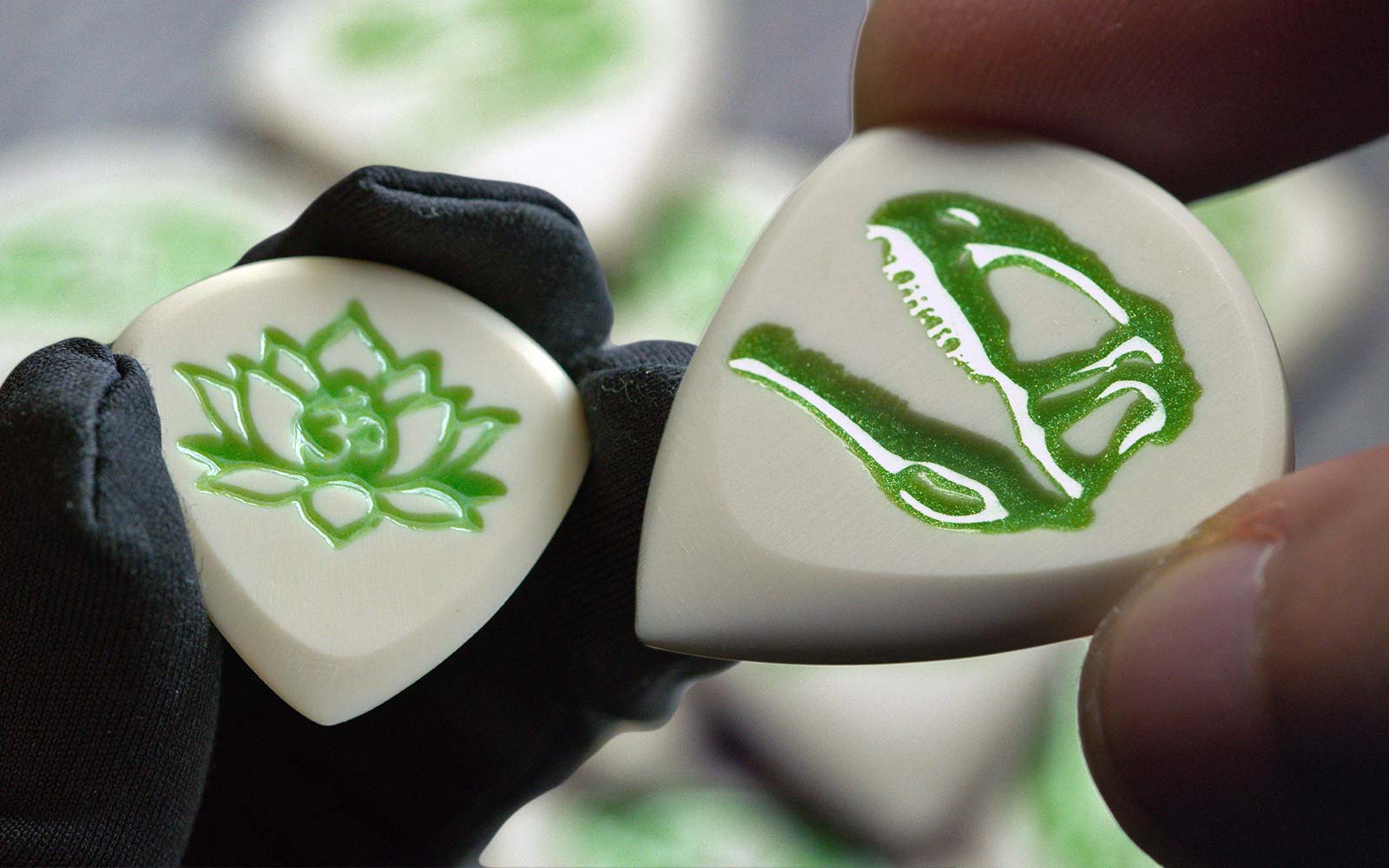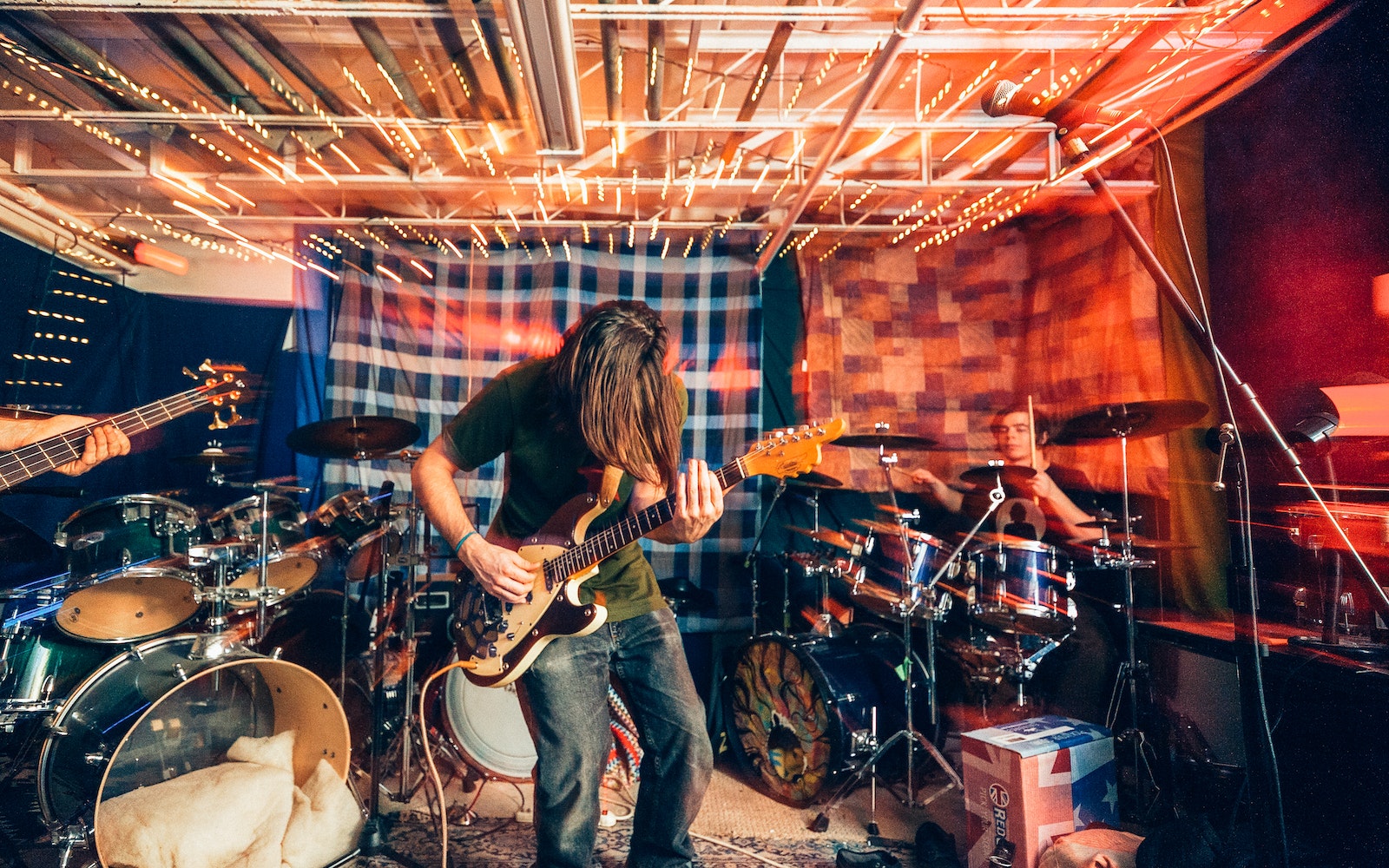Jonny Greenwood & Killswitches: Radiohead's Sonic Exploration
by Alex Rodea June 16, 2024
Jonny Greenwood, the renowned lead guitarist of the iconic band Radiohead, has long been celebrated for his inventive use of the guitar as more than just an instrument, but as a vessel for sonic exploration. One of the distinctive techniques in his vast arsenal is the utilization of a kill switch on his guitar. This mechanism allows Greenwood to rapidly interrupt the signal from his guitar to the amplifier, creating a staccato effect that has become one of his signature sounds.
The kill switch, though not a new concept in the realm of guitar effects, has been used by Greenwood to contribute to the textural complexity of Radiohead's music. Its application can be both rhythmic and melodic, providing abrupt silences that punctuate the musical landscape. Greenwood's masterful incorporation of the kill switch exemplifies his approach to the guitar not just as a source of notes and chords but as a tool for producing unique and unexpected sounds.
Through his experimental mindset, Greenwood continues to inspire guitarists and musicians, proving that the boundaries of traditional guitar playing can be expanded. His innovative techniques, such as the use of the kill switch, have undeniably influenced the alternative rock genre, showcasing the guitar's potential for creating diverse and dynamic auditory experiences.

Jonny Greenwood's Guitar Techniques
Jonny Greenwood has significantly impacted modern guitar playing, with a distinctive use of the killswitch and a unique approach to equipment and sound crafting. His methods have helped define Radiohead's sonic landscape.
Signature Sounds and Influences
Greenwood draws inspiration from varied genres, contributing to his unique sound. He incorporates elements of rock, jazz, and electronic music, where the Fender Telecaster Plus and the Vox AC30 amplifier play pivotal roles. His sonic palette is further broadened by integrating effects from pedals such as the DigiTech Whammy.
The Role of the Killswitch in Greenwood's Music
The killswitch has become a hallmark of Greenwood's style, particularly notable in the song "Paranoid Android" from Radiohead's album OK Computer. The switch, an electronic component that allows him to abruptly cut off the guitar signal, is used to create a stuttering effect that adds a distinctive texture to his riffs.
Guitars with kill switches used by Greenwood:
- Fender Telecaster Plus
- 1975 Fender Starcaster
Related: Shop Iron Age Guitar Kill Switches
Equipment and Guitar Setup
Greenwood's notable guitar is a Fender Telecaster Plus equipped with Lace Sensor pickups and a Seymour Duncan JB humbucker in the bridge position. His amps of choice include the Vox AC30 and the Fender Eighty-Five, adding a layer of warmth and depth to his tone.
-
Main Pedals:
- Marshall Shredmaster
- DigiTech Whammy
-
Amplifiers:
- Vox AC30
- Fender Eighty-Five
Integrating A Kill Switch in Different Genres
The versatility of the killswitch allows Greenwood to traverse various genres seamlessly. From the aggressive rock tones in The Bends to the experimental textures in Kid A and Amnesiac, the switch helps create abrupt sonic contrasts that enhance the band's eclectic style.
Evolution of Guitar Effects in Radiohead's Albums
Over the years, Greenwood has evolved his use of guitar effects. The early albums featured heavy distortion and delay, while later works like Kid A saw a shift towards a more electronic sound. Each album reflects a distinct approach to effects, showcasing how Greenwood's techniques adapt with Radiohead's musical evolution.
Greenwood's Contribution to Modern Guitar Play
Jonny Greenwood has substantially influenced modern guitar techniques, pushing the boundaries of the instrument’s capabilities within Radiohead's soundscapes and beyond.

Extended Techniques and Experimental Uses
Jonny Greenwood's approach to guitar involves an array of extended techniques that have become hallmarks in alternative and art rock textures. Incorporating the Digitech Whammy pedal, he innovatively manipulates pitch and timbre, which can be distinctly heard in songs like "My Iron Lung." Greenwood often employs a Fender Starcaster, exploiting its wide range of sounds to contribute to his signature style. Notably, his experimental use extends beyond the guitar; the Ondes Martenot, an early electronic instrument, is frequently used to add haunting layers to Radiohead's music, evident in tracks such as "How to Disappear Completely."
Another element of Greenwood's inventive guitar play is the use of the kill-switch technique, enhancing the dynamic and rhythmic aspects of his playing. This method, which rapidly turns the guitar signal on and off, creates a stuttering effect that serves both melodic and percussive purposes. Not dissimilar to methods used by Eddie Van Halen and Tom Morello, Greenwood's application of the kill-switch in songs like "Creep" contributes to the distinctive sound that sets Radiohead apart.
Inspiration and Legacy
Jonny Greenwood's innovative guitar work has had a substantial impact on modern guitarists, providing a rich source of inspiration. His propensity for blending classical sensibilities with unorthodox rock forms has showcased his dual role as a composer and a musician. Other artists have cited Greenwood's contribution to Radiohead's sonic palette, particularly his songwriting that seamlessly interweaves with the rest of the band's contributions to create intricate and textured music.
Through his experimental techniques and sonic curiosity, Greenwood has paved a path for many contemporary musicians, encouraging them to explore beyond conventional guitar play. His legacy resonates in the music of new artists and fuels ongoing discussions in guitar forums and music workshops, emphasizing creativity and innovation in modern guitar techniques.
Discography and Notable Performances
Jonny Greenwood, renowned for his innovative guitar work with Radiohead, has notably incorporated the guitar killswitch technique into several tracks, elevating the band's music. His discography is punctuated with works that feature this distinctive style, both within Radiohead and in his solo endeavors.
Iconic Radiohead Tracks Featuring A Kill Switch
- "Paranoid Android": The multi-section epic from the album OK Computer showcases Greenwood's skill with the switch, adding a stuttering effect to the guitar that contributes to the song's complex and layered sound.
- "Street Spirit (Fade Out)": Although not prominently featuring the switch, the haunting melody from the album The Bends is a testament to Greenwood's guitar artistry that would evolve in later works.
Solo Projects and Collaborations
- Composer: As a composer, Greenwood has stepped beyond the traditional realm of rock music, producing scores for films and orchestral works that often feature unique instruments like the ondes Martenot, displaying his diverse musical abilities.
- Ondes Martenot and Harmonica: Greenwood has expanded his instrumental repertoire to include the ondes Martenot, an early electronic musical instrument, and the harmonica, bringing a varied musical essence to his compositions and performances.
Live Performances and Tours
- Radiohead's Evolving Live Shows: Radiohead's live performances often highlight Greenwood's experimental guitar techniques. Albums like Kid A and Amnesiac come to life on stage, with Greenwood manipulating the kill switch for textural effects that captivate audiences.
- Diverse Concert Repertoire: Greenwood's dynamic showmanship is witnessed in Radiohead's concerts, where he seamlessly transitions from traditional guitar play to moments of spontaneous creativity, using the killswitch and other effects to enrich the live experience.
Technical Aspects of Guitar Killswitch
The guitar kill switch is a mechanism that allows guitarists to interrupt the signal from their instrument in a controlled manner. Jonny Greenwood of Radiohead is known for utilizing this technique to add a staccato or stuttering effect to his music.
Mechanical and Electronic Components
This type of switchoperates by momentarily cutting the guitar's output signal. This can be achieved in several ways, but primarily through mechanical or electronic means. The simplest form of a killswitch is a push-button that breaks the circuit of the pickup signal. When pressed, the button creates an open circuit, silencing the guitar. Releasing the button allows the signal to flow again, producing sound.
The electronic components may vary but generally include:
- Tactile switch: A button that can be pressed to break the circuit.
- LED indicator: Often included to show whether the effect is active.
- Wiring: Connects the switch to the guitar's output jack and pickups.
Related: Kill Switch Frequently Asked Questions
Comparison with Other Signal Interruption Methods
The use of a kill switch differs from other signal interruption methods like volume swells or effects pedals. For instance:
- Volume Swells: They are achieved by rolling the guitar's volume knob off and on, which creates a slower, more fluid interruption.
- Digitech Whammy WH-1: A pedal that alters pitch but can also mute the signal. However, its muting effect is not as immediate or as staccato as a killswitch.
- Fender Twin Reverb: An example of an amplifier that, while having a vintage tone and capable of handling dynamic playing, does not have a built-in kill-switch.
The kill switch offers a distinct and rapid on/off effect compared to these methods, making it ideal for more percussive and rhythmic interruptions. Its use can be equated to toggling the mute button at high speed, a technique not easily replicable by traditional guitar effects or vintage gear without the inclusion of such a switch.
Also in Iron Age || General Blog

The 3 Best Engraved Guitar Picks to Personalize Your Playing Experience
by Alex Rodea March 20, 2025
Engraved guitar picks add both style and function, offering extra grip and a personal touch with custom initials, logos, or messages. Whether you're looking for a unique gift or a pick that stands out, check out our top choices and grab your first engraving for free with code...

Guitar Jack Not Working? Here's A Few Easy Steps To Fix Crackles & Pops
by Alex Rodea March 19, 2025

Mono vs Stereo Jacks: Key Differences & How to Wire Them
by Alex Rodea March 06, 2025

The Best Acoustic Guitar Picks: Tips & Considerations For Newbies
by Alex Rodea March 06, 2025

The Best Guitar Picks For Bass: A Guide To Help You Choose
by Alex Rodea March 05, 2025

What is a Fret Wrap, String Muter, or String Dampener?
by Alex Rodea March 05, 2025
+Iron Age Blogs
For the latest news & announcements, check out our News & Updates Blog
For tips, tricks, & other informative articles, check out our General Guitar Blog
Become a newsletter subscriber to get the latest info on new blog articles, receive exclusive promo codes, and be notified of upcoming giveaways!
+Recent Articles
-
The 3 Best Engraved Guitar Picks to Personalize Your Playing Experience
March 20, 2025
-
Guitar Jack Not Working? Here's A Few Easy Steps To Fix Crackles & Pops
March 19, 2025
-
Mono vs Stereo Jacks: Key Differences & How to Wire Them
March 06, 2025
-
The Best Acoustic Guitar Picks: Tips & Considerations For Newbies
March 06, 2025
-
The Best Guitar Picks For Bass: A Guide To Help You Choose
March 05, 2025
-
What is a Fret Wrap, String Muter, or String Dampener?
March 05, 2025
-
Guitar String Names & How To Memorize Them
March 05, 2025
-
How To Make Wooden Guitar Picks: Ebony Spearhead
March 05, 2025
-
Top 3 Best Guitar Picks For Grip: Iron Age Edition
March 05, 2025
-
Are Guitar Picks Necessary? Exploring the Pros, Cons, and Playing Styles
March 05, 2025
+Affiliate Notice
Iron Age is a participant in the Amazon Services LLC Associates Program, an affiliate advertising program designed to provide a way for websites to earn advertising revenues by advertising and linking to Amazon.com
Iron Age Guitar Accessories
226 Douglas Way St
San Antonio, TX 78210
USA
⚔️
“Quality is never an accident. It is always the result of high intention, sincere effort, intelligent direction and skillful execution. It represents the wise choice of many alternatives.”
~William A. Foster (MOH Recipient, 1945)
Sign up for the Iron Age newsletter to Save 15% on your 1st order, plus get exclusive offers, product updates, and early access to giveaways!
© 2025 Iron Age Guitar Accessories.
Est 2015.


Alex Rodea
Author
Founder of Iron Age, my guitar journey began in 2006, fueling a passion for crafting premium guitar accessories that embody timeless style & innovative expression. Through my Stay Tuned Guitar site I also share tips & info for new guitarists, offering everything from beginner tutorials to DIY tips & general music knowledge.